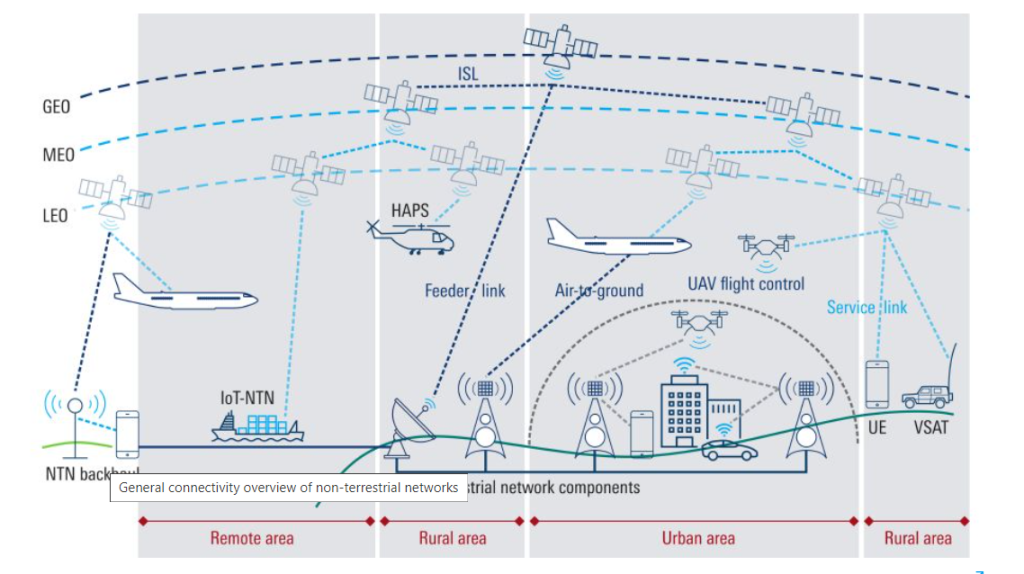The key engineering, legal and policy issues
NTN
Non-terrestrial Networks (NTN) are wireless communication systems that operate above the earth’s surface. They include various technologies, such as satellites or High Altitude Platforms (HAPS). Their counterparts are terrestrial networks (TNs) which operate on the Earth’s surface and include mobile broadband.
NTN consists of variants of space-borne and aerial communication networks including GEO, MEO and LEO satellite constellations, High Altitude Platform Systems (HAPS), Low Altitude Platform Systems (LAPS), and air-to-ground (A2G) networks.

The standards body Third Generation Partnership Project (3GPP) has defined two types of NTNs to be included in the 5G standard. These are NTN-IoT and NTN-NR:
- NTN-IoT expands the reach of IoT use cases, enabling global coverage over land, sea and air.
- NB-IoT NTN supports access to IoT devices directly from satellites for agriculture, transportation, and other applications. NR NTN supports satellite network access to handsets for use cases such as voice and data transmission in geographic areas not served by terrestrial networks.
5G NTNs are seen as a complement to terrestrial networks (TN) extending connectivity in rural and remote areas. They are also well suited to support various use cases including disaster response and management, maritime and aviation connectivity, verticals such as agriculture and mining and IoT applications. NTNs are also expected to play a major role in future 6G (IMT-2030) technologies.
